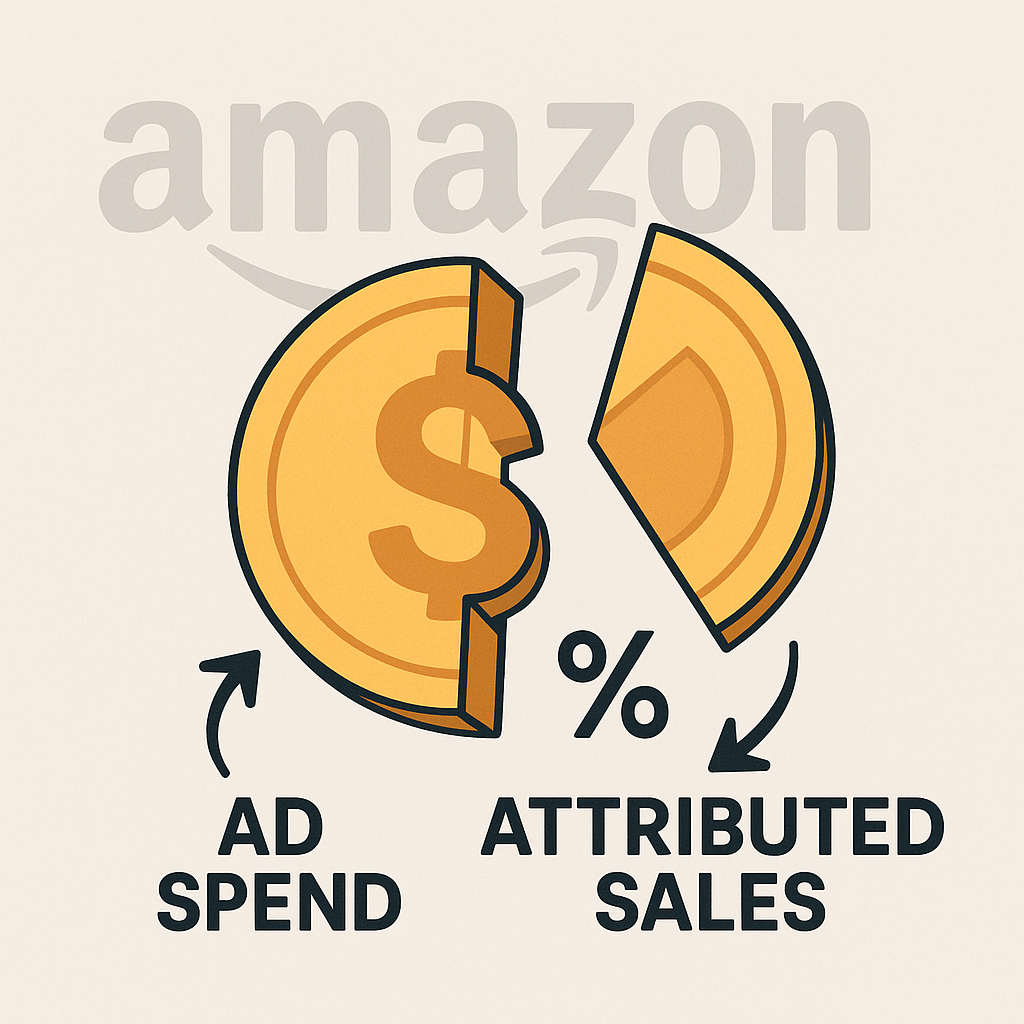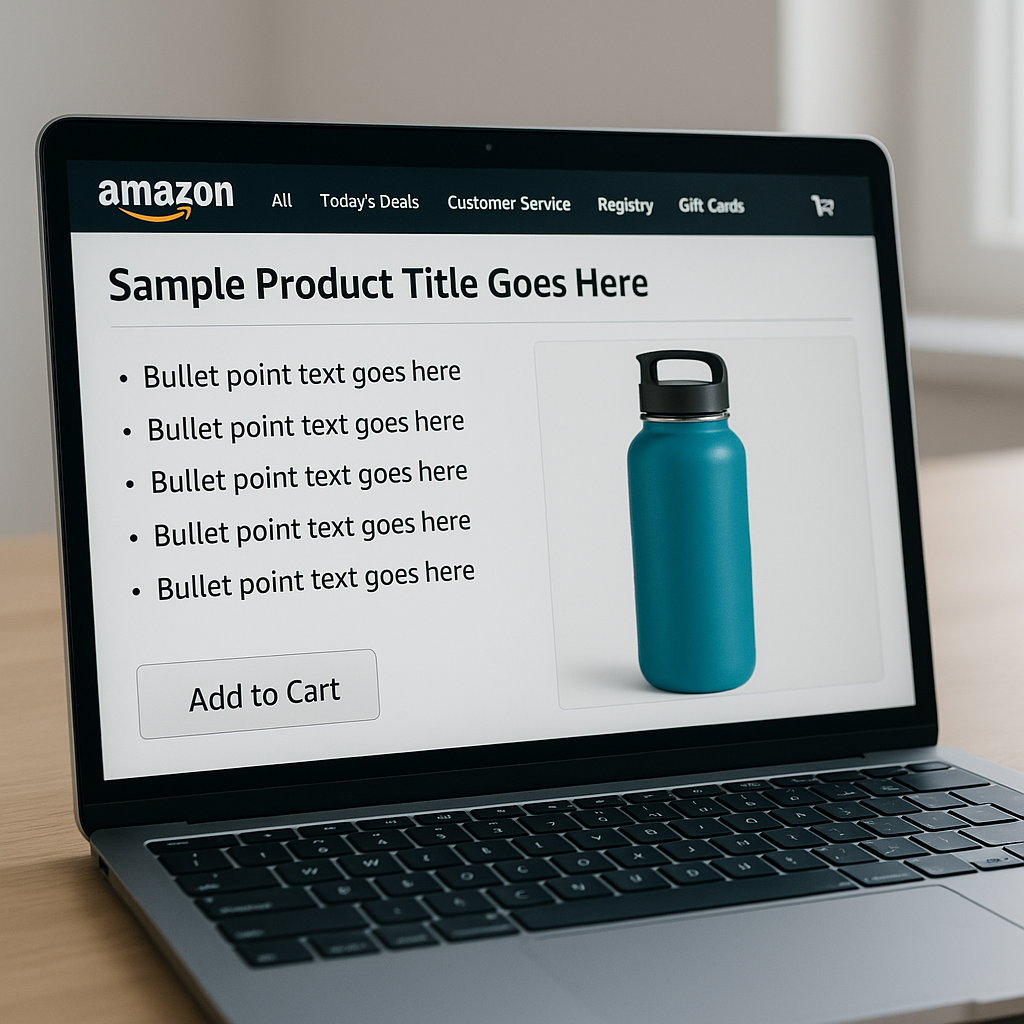How to Reduce Your Amazon ACOS and Increase Profits
Amazon Advertising Cost of Sale (ACOS) is the critical metric that determines your profitability on the platform. Simply put, it’s the percentage of your revenue that you’re spending on advertising to generate sales. The lower your ACOS, the higher your profit margins—making ACOS optimization one of the most impactful activities for Amazon sellers. In this comprehensive guide, you’ll discover proven, data-driven strategies to bring down your ACOS and boost your bottom line, whether you’re managing a single campaign or optimizing your entire advertising portfolio.
Understanding ACOS—The key to Amazon profitability
Before diving into optimization tactics, it’s essential to understand what ACOS actually means for your business. ACOS is calculated by dividing your ad spend by attributed sales, then multiplying by 100 to get a percentage:
ACOS = (Ad Spend ÷ Attributed Sales) × 100
While ACOS focuses specifically on advertising efficiency, it’s helpful to know how it differs from related metrics. Return on Ad Spend (ROAS) is essentially the inverse of ACOS (Sales ÷ Ad Spend), while Total ACOS (TACOS) measures your total advertising spend against total sales (including organic).
The most crucial calculation for any seller is determining your break-even ACOS—the point at which your advertising costs equal your profit margin. If your product has a 40% profit margin, your break-even ACOS is 40%. Anything above means you’re losing money on each advertised sale; anything below represents profit. Setting a target ACOS based on your specific margins provides a clear benchmark for optimization efforts.
Factors that drive high ACOS on Amazon
Several common issues contribute to elevated advertising costs on Amazon. Identifying these problems is the first step toward implementing effective solutions to decrease advertising costs.
- Poor keyword targeting – Bidding on irrelevant or broad terms leads to wasted spend on low-converting traffic
- Weak product listings – Even perfect ad targeting won’t compensate for listings that fail to convert
- Unoptimized bids and budgets – Overbidding or underfunding successful campaigns limits efficiency
- Missing negative keywords – Failure to exclude irrelevant search terms drains your budget
- Ineffective campaign structures – Disorganized campaigns and ad groups make optimization nearly impossible
- Underutilization of automation – Not leveraging available tools for data analysis and bid management
These issues compound over time, gradually eroding profitability as advertising costs climb without corresponding increases in conversion rates.
14 Proven strategies to reduce Amazon ACOS
Lowering your advertising costs requires a systematic approach focused on improving efficiency across multiple areas. The following tactics have consistently helped sellers improve their advertising performance and boost profitability.
1. ASIN/SKU prioritization
Not all products deserve equal advertising investment. Focus your budget on your highest-converting products to avoid diluting ad spend across underperforming SKUs. Prioritize items with strong profit margins, high conversion rates, and positive customer reviews. This selective approach ensures your advertising dollars flow toward products most likely to generate profitable returns.
2. Keyword research & optimization
Successful campaigns begin with thorough keyword research. Use Amazon’s Search Term Report, third-party research tools, and competitor analysis to identify high-intent search terms relevant to your products. Expand beyond obvious head terms to include long-tail keywords with lower competition and often higher conversion rates. Regularly review performance data to refine your keyword strategy based on actual results.
3. Add and manage negative keywords
One of the quickest ways to improve campaign efficiency is eliminating wasted spend on irrelevant searches. Review your search term reports weekly to identify terms generating clicks but few or no sales. Add these as negative keywords at the campaign or ad group level to prevent further spend on non-converting traffic. This practice alone can significantly reduce advertising costs.
4. Optimize product listings
Ad performance is intrinsically linked to listing quality.
Even perfect targeting can’t overcome poor conversion rates from weak listings. Ensure your product title, bullet points, description, and backend search terms contain relevant keywords. Invest in professional product photography, implement A+ content where available, and actively manage your reviews to build customer trust and improve conversion potential.
5. Ad structure segmentation
Logical campaign organization enables precise budget control and performance analysis. Segment your campaigns by product category, match type, or performance level. Within campaigns, create tightly focused ad groups around specific product features or keyword themes. This structured approach allows for more granular optimization and easier identification of what’s working versus what needs improvement.
6. Bid strategy optimization
Amazon offers various bidding strategies to help control costs. For established campaigns with stable performance, consider “down only” bidding strategies that prevent automatic bid increases while allowing decreases for efficiency. Reserve “up and down” bidding for new product launches or aggressive growth phases. For mature products focused on profitability, fixed bids with manual adjustments often provide the most control over advertising expenses.
7. Dayparting
Customer behavior varies throughout the day and week. Using advertising rules or third-party tools, implement dayparting to reduce bids during historically low-conversion periods and increase bids during high-performance times. This approach ensures your budget is concentrated when shoppers are most likely to purchase, improving overall efficiency and lowering promotional costs.
8. Budget optimization
Regularly assess budget allocation across your portfolio. Reduce or pause spending on campaigns with consistently high advertising costs without corresponding sales. Redirect those funds to high-performing campaigns that may be limited by budget constraints. This reallocation ensures your advertising dollars flow toward the most efficient opportunities.
9. CVR (Conversion Rate) optimization
Small improvements in conversion rate can dramatically impact advertising efficiency. Test different main images, pricing strategies, and listing elements to identify what resonates best with shoppers. Monitor the impact of these changes on both click-through rate and conversion rate. Even a 1-2% improvement in conversion can significantly reduce promotional spending while maintaining sales volume.
10. Placement adjustments
Not all ad placements deliver equal value. Review placement performance reports to identify where your ads convert best. Consider increasing bid modifiers for top-of-search placements if they demonstrate strong conversion rates, while reducing bids for product page placements that underperform. This targeted approach maximizes visibility where it matters most while minimizing exposure in less effective positions.
11. Ad type & targeting analysis
Different ad formats and targeting methods perform differently across product categories. Analyze performance across Sponsored Products, Sponsored Brands, and Sponsored Display campaigns to identify which deliver the lowest promotional expenses for your specific products. Similarly, compare automatic targeting versus manual campaigns to determine the optimal mix for your business goals.
12. Utilize automation and tools
Leverage Amazon’s native optimization features or third-party automation tools to maintain campaign efficiency at scale. Automated bid adjustments, keyword harvesting, and performance monitoring can help maintain optimal spending levels without requiring constant manual intervention. These tools are particularly valuable for accounts with extensive product catalogs or complex campaign structures.
13. Regular campaign audits
Schedule comprehensive campaign reviews at least monthly to identify broader trends and opportunities.
Look beyond day-to-day optimizations to assess overall account health, keyword coverage gaps, and competitive positioning. These periodic deep dives help prevent optimization tunnel vision and ensure your strategy remains aligned with changing market conditions.
14. Avoid keyword dumping
Quality trumps quantity in keyword targeting. Resist the temptation to add hundreds of keywords to each campaign or ad group. Instead, maintain tight, relevant keyword groupings that allow for precise bid management and clear performance analysis. This focused approach improves quality score, relevance, and ultimately, conversion rates—all contributing to lower promotional costs.
Balancing ACOS reduction with business growth
While lowering advertising expenses is generally desirable, blindly pursuing the lowest possible ACOS isn’t always the optimal strategy. Different business objectives may justify temporarily higher promotional spending in specific scenarios.
During new product launches, accepting elevated advertising costs can accelerate initial sales velocity, improve organic ranking, and generate early reviews—all crucial for long-term success. Similarly, when pursuing market share expansion or competing for competitive keywords, strategic investments in higher-cost advertising may yield valuable benefits beyond immediate profitability.
Setting appropriate thresholds based on business phase and objectives provides a more nuanced approach to management. Consider establishing tiered targets: aggressive efficiency targets for mature products, moderate targets for growth-phase products, and more flexible targets for new launches. This graduated approach balances immediate profitability with sustainable growth.
Remember that obsessing over extremely low advertising expenses can actually limit your business potential. If cutting your promotion spending from 25% to 15% results in a 50% reduction in sales volume, the net effect might be negative for your overall business. Total Advertising Cost of Sale (TACOS) provides a more holistic view by measuring ad spend against total sales (including organic), offering perspective on how advertising influences your broader business performance.
Advanced tactics and tools for continual ACOS improvement
Once you’ve implemented the fundamental optimization strategies, these advanced approaches can help further refine your advertising efficiency.
Sophisticated merchants increasingly leverage specialized automation tools for bidding, dayparting, and keyword management. These solutions apply algorithmic decision-making to maintain optimal advertising performance at scale, often identifying patterns and opportunities that might escape manual analysis. When evaluating automation options, consider how they handle your specific business constraints and objectives rather than focusing solely on features.
Successful optimization requires patience and perspective. Resist making reactive changes based on single-day fluctuations. Instead, establish a consistent review cadence—typically every 3-7 days—to evaluate meaningful performance trends before implementing significant changes. This measured approach prevents overreaction to normal performance variations while still enabling timely adjustments.
Recognize that advertising performance doesn’t exist in isolation. Integration with broader e-commerce strategies often yields multiplicative benefits. Coordinating inventory management ensures you’re not advertising out-of-stock products. Aligned pricing strategy prevents advertising products at non-competitive price points. Review generation efforts improve conversion rates. This holistic approach creates a virtuous cycle where improvements in one area enhance performance across your entire business.
Placement-level analysis offers another dimension for advanced optimization. Beyond keyword performance, examine how your ads perform across different positions and devices. Top-of-search placements often convert differently than product page placements. Mobile shoppers may demonstrate different buying patterns than desktop users. These insights allow for increasingly precise bid adjustments and budget allocation.
When considering tools to support your optimization efforts, evaluate both Amazon’s native capabilities and third-party solutions. Amazon’s advertising console offers increasingly sophisticated features at no additional cost, though it’s limited to Amazon-specific data. Third-party platforms often provide cross-channel insights and advanced automation but require additional investment. The optimal solution typically depends on your business scale, complexity, and internal capabilities.
Conclusion
Lowering your Amazon advertising costs requires a strategic combination of data-driven decisions, continuous testing, and tactical flexibility. By implementing the proven tactics outlined in this guide—from meticulous keyword management to sophisticated campaign structuring—you can achieve substantial improvements in advertising efficiency while maintaining or even growing your sales volume.
Remember that optimization is an ongoing process, not a one-time fix.
Market conditions, competition, and customer behavior constantly evolve, requiring corresponding adjustments to your strategy. Commit to regular analysis and refinement of your campaigns to maintain optimal performance over time.
Start by conducting a comprehensive audit of your current campaigns, identifying your highest-cost areas, and implementing the strategies most relevant to your specific challenges. With consistent application of these principles, you’ll be well-positioned to reduce promotional spending and increase profitability across your Amazon business.
Frequently asked questions
What is a good ACOS for Amazon sellers?
A “good” ACOS varies by product, margin, and category, but most experts cite 15–35% for established brands. Your ideal ACOS should be below your profit margin for actual profitability.
Is a lower ACOS always better on Amazon?
Not necessarily—a lower ACOS might signal high efficiency but can also limit growth. Sometimes a higher ACOS is acceptable for new products, brand awareness, or buy box wins as part of a broader strategy.
How often should I optimize or adjust my Amazon campaigns?
Check performance at least weekly, but allow for a 72-hour (sometimes longer) delay in Amazon’s reporting before making major changes.
What are the fastest ways to lower ACOS?
Quick wins include adding negative keywords, optimizing your product listings for conversions, cutting spend on high-ACOS campaigns, and refining bids and budgets.
Should I use auto or manual campaigns to reduce ACOS?
Both have roles—start with auto to discover new keywords, then shift budget to manual for granular control and lower ACOS once you identify top performers.
